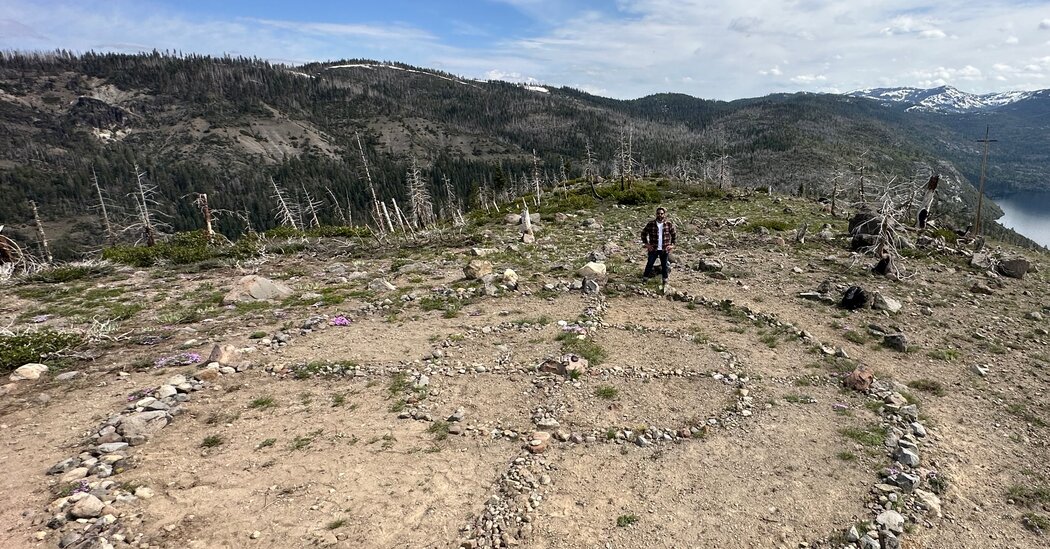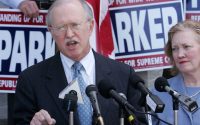After Uvalde, Challenges Endure for the Police Despite Clear Protocols
In its report this week on the deadly school shooting in Uvalde, Texas, Justice Department officials strongly criticized the local police and issued blunt, unambiguous guidance for the future: Officers must rapidly confront a gunman, even if it costs them their lives.
The rebuke reflected the department’s frustration with the failure of police officials in the deadly 2022 shooting to observe protocols developed over the past two decades, and intended to address the threat of gunmen armed with battlefield-grade guns that can quickly kill dozens of people.
Most other types of police training emphasize careful, coordinated action to minimize the loss of life. But active-shooter protocols ask officers to abandon their civilian mind-set and transform, in an instant, into a kind of warrior posture.
Federal investigators said the decision to not rapidly confront the gunman was the single biggest failure of leadership and training during the attack at Robb Elementary School in Uvalde. It took 77 minutes for officers to enter the classrooms where the gunman had killed 19 students and two teachers, and fatally shoot him.
The shortfall in the response has been highlighted in several inquiries into the massacre. But in the time since the killings, officer training on active-shooter events has not been substantially revised to address the chaotic decision-making that led to the slow response, according to several policing experts. And it remained unclear how many of the nation’s roughly 18,000 law enforcement agencies, most of them small and rural like those in Uvalde, would do better.
Even in Texas, where lawmakers expanded active-shooter training last year, requiring every officer to train for at least 16 hours, most courses do not specifically recreate circumstances similar to what took place in Uvalde, where arriving officers faced a gunman behind a closed door, and a determination by the on-scene commander that they were dealing with a barricaded subject with whom they might be able to negotiate.
“We don’t have a Uvalde-specific scenario,” said J. Pete Blair, the executive director of the Advanced Law Enforcement Rapid Response Training Center at Texas State University, whose courses are required under Texas law.
Mr. Blair said the group’s trainings did address the difference between active shooters, who must be confronted immediately, and hostage takers, who may require a slower response. But the gray areas present difficulties, experts said.
“The determination on whether or not to intervene in an active shooter who takes hostages is causing police responders significant challenges,” said Lt. Travis Norton, a police training expert in California who has studied active-shooter responses nationally.
Lieutenant Norton, who was interviewed by Justice Department investigators during their Uvalde inquiry, said part of the challenge was that supervisors were often trained more on handling tactics than leadership judgment when it came to mass shootings.
“We’re told these guys should have known they had to go in. But should they?” he said. “We do a poor job of training, and now we thrust them into this complex event.”
Since the school shooting at Columbine High School in Colorado in 1999, when the first arriving officers waited for tactical teams instead of immediately trying to stop the two gunmen, police officers around the country have been told to confront an active shooter right away. By then, it had suddenly become clear that a rapid-firing, large-caliber weapon could turn novice shooters, like the 18-year-old Uvalde gunman, into mass killers within minutes.
But also in the last two decades, there has been a major rethinking of the police’s use of force in other contexts. Most officers spend far more time discussing and dealing with situations in which they must try to de-escalate a situation.
“You have two things going on with policing: active shooter, speed things up, and on the other hand, when you’re dealing with people in crisis with weapons, slow things down,” said Chuck Wexler, the executive director of the Police Executive Research Forum.
“That is the challenge of American policing right now,” he said. “Cops can get in trouble for making a mistake using too much force, or not enough force.”
Some cases have been straightforward, as in a recent school shooting in Nashville, in which officers followed the sounds of gunfire and fatally shot the armed assailant in an open area. Others have been more complex: There was a three-hour standoff at the Pulse nightclub in Orlando in 2016 that ended only after a law enforcement vehicle smashed through a building wall and confronted a gunman who had taken hostages and claimed to have explosives.
“I think we’re getting better, but clearly it’s incrementally better,” said Frank Straub, the lead author of the Justice Department’s report on the police response to the Pulse shooting. “We can’t train for the best-case situation. We have to train for the worst-case situation, when things don’t go the way they’re supposed to.”
The Justice Department offered guidance in its Uvalde report aimed at removing ambiguity for officers. When faced with an active shooter in a room with victims, a confrontation “must be undertaken regardless of the equipment and personnel available to those first on the scene,” the report said.
The Texas Department of Public Safety, which oversees the Texas Rangers and the state troopers, has issued similar new guidelines.
The department had dozens of state troopers, supervisors and Texas Rangers involved in the response at Robb Elementary; like other officers at the scene, they did not rush in to confront the gunman. Many said later that they believed, because the gunman had gone for long stretches without shooting, that they were dealing with a barricaded subject and not someone actively killing people.
In 2022, the public safety department issued a simple rule for school shootings, similar to the federal guidance: Anytime officers respond to an active shooter in a school, they must never stop trying to confront the gunman.
State police are now told never to treat a school gunman as barricaded, whether or not the person may have others holed up. New recruits are given this clear direction at the academy.
Before the current school year started in Texas, the department says, it held active shooter trainings with school districts and conveyed its new directive.
But in certain scenarios, rapidly confronting a gunman could create other dangers, some police trainers said. “You don’t want people charging into a hostage barricade situation and initiating shooting when there isn’t shooting happening or hasn’t happened,” said Mr. Blair of ALERRT.
In Uvalde, the federal investigators found, the critical mistake came early in the police response.
Nearly a dozen officers had arrived at the school during the gunman’s initial burst of shooting, and they rapidly converged on the classrooms where they believed him to be. That was in line with their training and police protocols. As they approached the classroom doors, the gunman shot at them. Two were hit by shrapnel.
The problem came after they fell back, the report found.
The first arriving officers included senior leaders — the acting chief of the Uvalde Police Department, Mariano Pargas, and the chief of the school Police Department, Pete Arredondo — but they made the wrong call, the report found. The officers in the hallway waited to enter the classroom, a decision that the Justice Department said was clearly a mistake and attributed primarily to Mr. Arredondo.
Mr. Pargas resigned after the Uvalde shooting. Mr. Arredondo was fired.
Mr. Arredondo has previously defended his actions through a lawyer, likening a swift approach to the classroom where the gunman had fired with an AR-15-style rifle as “suicide.”
“Out of all the officers that were there, from all sorts of agencies and departments, not even one came to him with even a suggestion that he should take a different approach,” a lawyer for Mr. Arredondo wrote in 2022. “If anyone felt they had a better plan, he would have been all over it.”
The International Association of Chiefs of Police cites a 2009 mass shooting at Fort Hood in Texas as an example of how officers can prevent further bloodshed with quick action. In that case, the association said, two officers “took immediate action that successfully stopped the threat,” wounding the gunman.
Active shootings result in high casualties “generally before officers or other emergency responders can even be summoned,” according to the association’s 2018 guidance on active shooters, so officers who arrive first should take “swift, but calculated” action, even if they find themselves outgunned.
Edgar Sandoval contributed reporting from San Antonio.


